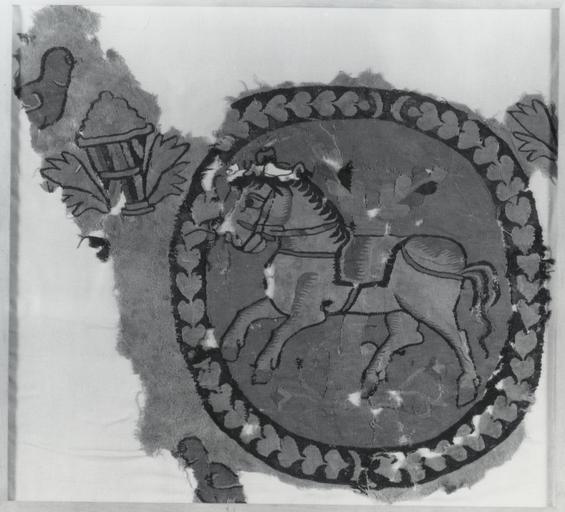MAKE A MEME
View Large Image

| View Original: | Egyptian_-_Wall_Hanging_or_Curtain_Fragment_with_Riderless_Horse_-_Walters_83461.jpg (1799x1630) | |||
| Download: | Original | Medium | Small | Thumb |
| Courtesy of: | commons.wikimedia.org | More Like This | ||
| Keywords: Egyptian - Wall Hanging or Curtain Fragment with Riderless Horse - Walters 83461.jpg This whimsical saddled and fully harnessed but riderless horse was part of a larger curtain or wall hanging of a type popular in the late 5th and early 6th century Curtains and wall hangings were used in private homes as well as in public and religious buildings to prevent drafts divide spaces and provide privacy The tapestry weave of this piece is ideal for such textiles as it produces a design that can be viewed from either side The complete hanging likely would have had many identical roundels one is in the Cleveland Museum of Art in staggered rows on a background interspersed with baskets and birds These designs are traditionally Egyptian while the roundel borders of heart or rose petal chains and the stylized trees are adapted from imported Sassanian silks century 6 Early Byzantine wool cm 41 44 0 1 accession number 83 461 1842 Henry Walters Baltimore date and mode of acquisition unknown Walters Art Museum Henry Walters Acquired by Henry Walters Beyond the Pharaohs Egypt and the Copts in the Second to Seventh Centuries A D Museum of Art Rhode Island School of Design Providence; The Walters Art Gallery Baltimore 1989 place of origin Egypt Walters Art Museum license Byzantine and Early Russian art in the Walters Art Museum Textiles in the Walters Art Museum Byzantine textiles in Egypt Horses in art Silk weaving in Egypt | ||||